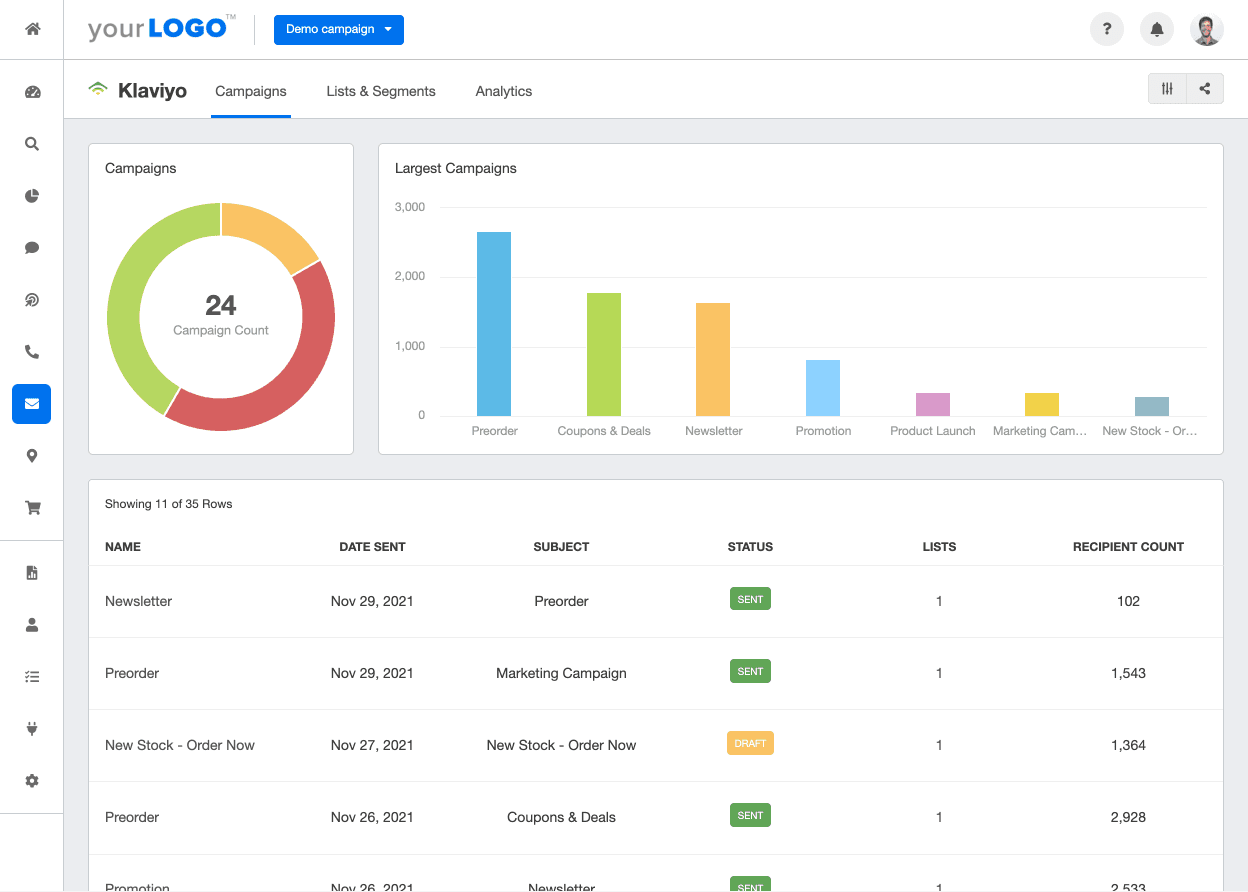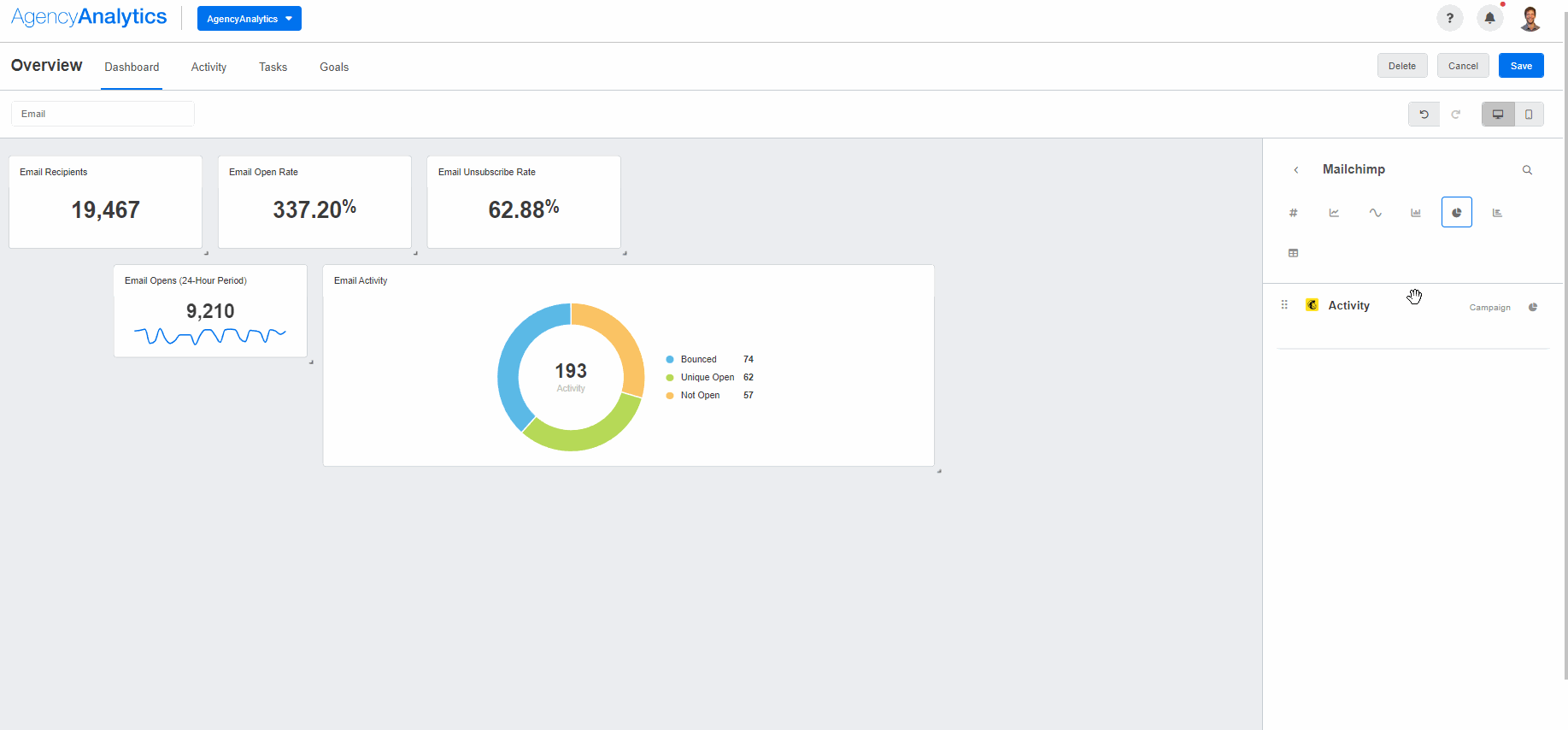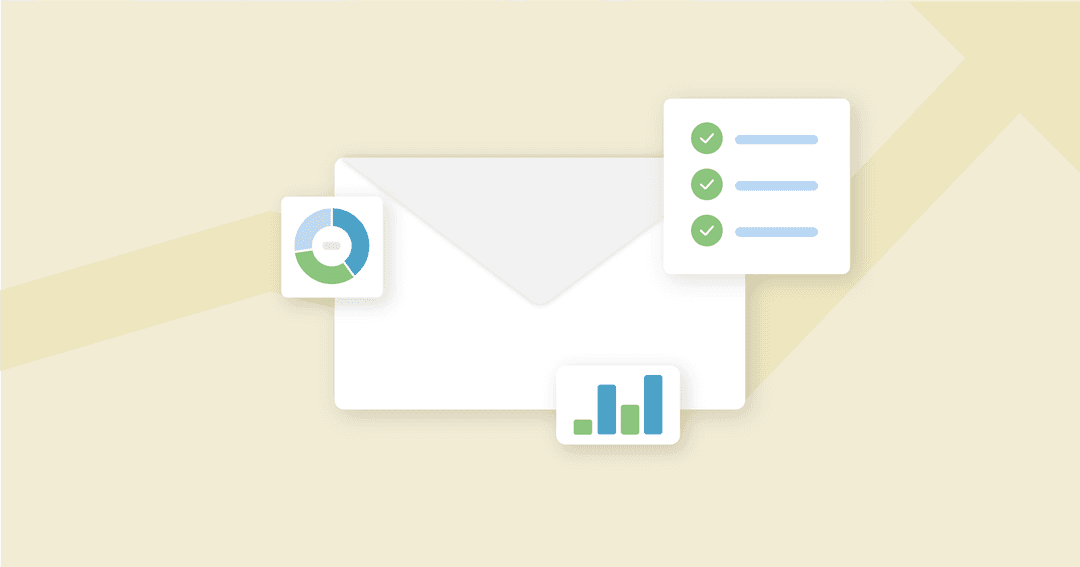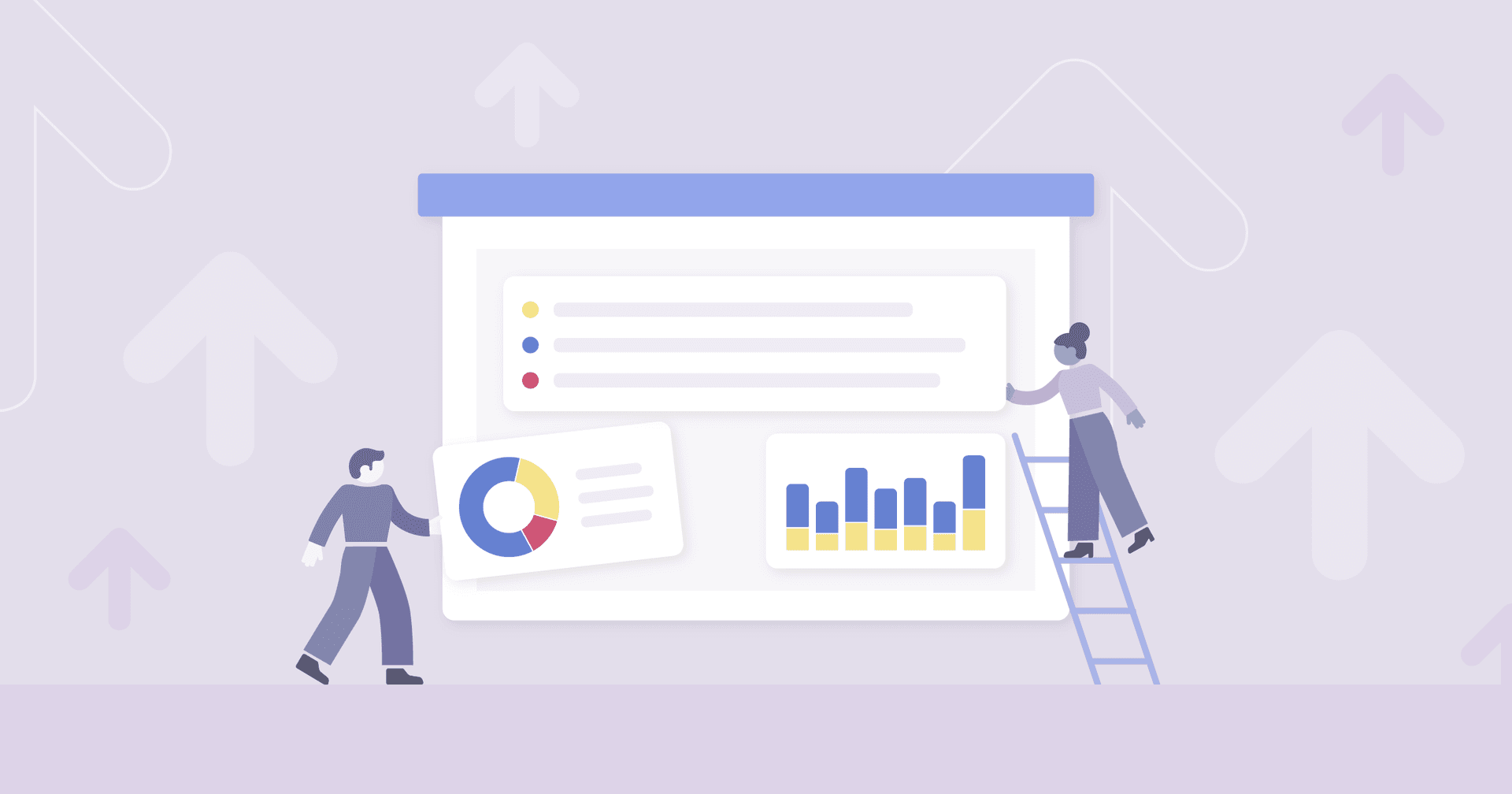Table of Contents
QUICK SUMMARY:
Email marketing campaigns are a worthwhile strategy for fostering communication with a client’s audience while also increasing conversion rates. In this article, Luke Dane, Founder of Sprocket Digital, offers a detailed email marketing checklist for agencies. Sprocket Digital covers everything that agencies need to know, helping them avoid mistakes and increase overall email engagement.
Missing the mark with your email marketing? With so many articles promising quick sales and ‘guaranteed’ conversions, it's easy to get overwhelmed. Decision paralysis is no joke, and the best way to solve this is to ignore all the noise and get back to basics.
That’s why Sprocket, in partnership with AgencyAnalytics, is distilling our industry know-how into a simple, actionable checklist designed to help you master your agency’s email marketing campaigns.
Don’t worry; this isn't another generic guide or top-ten article—our email marketing campaign checklist is designed to drive engagement, boost conversions, and maintain client relationships.
Why Is Email Marketing Important to Our Clients?
If you’re used to long-form copywriting like blogs and articles, it can be hard to understand the appeal of an email campaign.
After all, with such limited space, how do you write enough to establish trust in your client’s brand? How do you make sure you’ve included all the relevant information?
These are valid concerns, but they stem from a common misunderstanding of email marketing's purpose. An email campaign shouldn't be about building trust or delivering detailed information; it's about sparking interest and driving clicks. We like to think of it as a trailer for a movie – short, captivating, and designed to leave the audience wanting more.
Those who are successful at marketing know that at the end of the day, it's not about choosing one method over the other. What’s the point in having a website full of insight with no readers? Conversely, why drive a ton of traffic to a website that offers little value?
Both of these scenarios fall short. That’s why effective marketing stems from a symbiotic relationship between email and long-form content. Together, they work to capture interest and convert it into loyalty.
How Successful is Email Marketing?
It's easy to underestimate the power of a good email campaign. Many agencies contemplate the pros and cons of social media vs. email marketing for their clients. And this is because we all ignore emails, let our inboxes overflow, and hate receiving spammy mail.
However, all these issues stem from ineffective email deliverability. When done right, email is one of the most powerful methods to engage your audience and drive conversions.
According to a Forbes study, 77% of B2B buyers prefer email as their primary form of contact. When it comes to B2C, consumers are three times more likely to make purchases through email marketing than through social media sites. This makes sense when you think about the logistics.
Whether it's for work, personal matters, or shopping deals, email is a constant in our digital lives. It's global, consistent, and most importantly–versatile.
We won’t deny the fact that social media is growing in popularity. However, each platform has its own set of algorithms and trends that require specific, separate approaches. In comparison, email remains a steadfast and reliable channel.
Email is the undisputed champion of business communication and in our opinion, we don’t see it being dethroned anytime soon.
Luke Dane, Founder, Sprocket Digital
Beyond this reliability, email marketing delivers a phenomenal return on investment. For every $1 spent on an email campaign, marketers see an average return of $42 which is an astounding 4,200% ROI.
At Sprocket, we specialize in working with clients in the retail, ecommerce, and consumer goods sectors. These industries in particular benefit immensely from email marketing software, boasting an impressive ROI of 45:1. At the end of the day, our clients love email marketing because it consistently delivers results that other channels simply can't match.

AgencyAnalytics makes it easy to show your clients exactly how you're getting them a healthy ROI from their email campaigns. Start your free 14-day trial now!
Why Should Your Agency Use an Email Marketing Checklist?
Because an email marketing tool demands concise, snappy writing, it’s a bit of a double-edged sword. On one hand, it’s more accessible and engaging for customers. On the other hand, you have limited space to convey your message. That’s why you shouldn’t underestimate the importance of an email marketing checklist.
Think about it: We use lists for grocery shopping, planning vacations, and even daily to-dos. Arguably, driving conversions and creating profit is far more important than remembering to buy milk or packing sunscreen.
So why aren’t more agencies using an email campaign checklist?
In all truth, the reason a lot of agencies don’t implement a checklist is because it sounds overly simplistic. If you’ve been in marketing for decades, you might scoff at the idea of relying on something as basic as an email marketing checklist. But even industry experts make mistakes.
There's nothing worse than sending out the perfect email only to realize you missed a critical detail, like broken links or how the content appears in dark mode.
While these may seem like small oversights, they significantly impact your campaign's success and your reputation as an agency. This is why, beyond being an organizational tool, an email marketing checklist acts as a safety net.
Read More: How To Avoid 10 Cold Email Mistakes That Ruin Your Agency’s Reputation
Sprocket’s Seven Stages of Email Marketing Execution
At Sprocket, we know that a well-structured email marketing campaign is the difference between a mediocre response and an outstanding one.
To help you achieve the latter, we've broken down our process into seven essential stages. These stages ensure that every aspect of your email marketing checklist is meticulously planned and executed, from understanding the competition to optimizing your email campaigns for peak performance.
Step One: Competitor Analysis
Supporting your client’s competitors might sound counterintuitive, but it’s one of the best ways to understand what customers really want.
By signing up for your own email preview of competitors' marketing emails, you gain insights into their tried-and-tested methods and see firsthand what’s trending in the industry. This information can then be used as a springboard to tailor your own marketing email campaign strategy.
Carrying out this step is simple: Start by subscribing to all your client’s competitors' email newsletters. Scrutinize their content, noting the frequency, design, and types of promotions they offer.
Observe how they craft their subject line and analyze the effectiveness of their call-to-action buttons and links. For best results, we recommend planning this step a month in advance so you have a great source of information by the time you start your flows.
Read More: 35 Competitor Analysis Tools To Improve Your Marketing Campaigns
Step Two: Audience Segmentation
Once you’ve understood your client’s competition, the next step is to understand the target audience. Audience segmentation involves dividing the entire email list into distinct groups based on specific criteria. Tailor your messages to the unique preferences and behaviors of each group, in order to boost engagement and conversion rates.
When we segment a client's target audience, one of our go-to strategies is identifying VIP customers—those who make bulk or frequent purchases. After all, if your agency is going to invest your efforts, why not focus on the people who are already spending money?
Other segments should depend on the client's brand, but a common choice is to distinguish by gender or age.
For those wanting to get even more specific, we recommend segmenting based on shopping categories. For instance, a wine store could segment customers into those who prefer whites, reds, or rosés. This leads to highly targeted promotions that appeal directly to each group's tastes.
The beauty of audience segmentation is that with the right tools, it’s a seamless process. Integrate it with CMS and CRM and audience data is imported automatically, ensuring your client’s segments are always up-to-date.
Step Three: Strategy Development
The next step is the heart of your email marketing campaign—strategy development. This is where you lay the groundwork for the campaign's success by planning the flow, content, and timing of emails within email marketing platforms.
First, define your email flows, or automations. This process should include welcome emails, abandoned email messages, cart reminders, contact list follow-ups, and more. Look at your client’s past email copy and competitors’ emails for inspiration and identify what works and what doesn’t. This will help you create a flow that keeps the audience engaged and eager for more.
Next, don’t reinvent the wheel—draw inspiration from the best in the business. Websites like Really Good Emails have a great variety of top-notch email designs and strategies. If that doesn’t spark any ideas, we go on to browse platforms like Pinterest and Dribbble.
Additionally, our go-to advice for those starting out is to join one of the Klaviyo Facebook communities. This is the perfect space to exchange ideas and get real-time feedback on your marketing strategy.
Step Four: Content Creation
Now comes the exciting part—content creation. This is where you combine all your research and strategy development to craft the perfect emails.
Start by focusing on the priority flows. For ecommerce email marketing, this often means setting up essential sequences like welcome emails and abandoned cart reminders. As you progress, we recommend expanding to other valuable flows such as review requests, win-back campaigns, and review request flows for re-engagement.
Personalization is key to making your emails feel unique and relevant. At Sprocket we use Klaviyo which is great for targeting specific audience segments with different content blocks or personalizing elements within a single email.
Simple touches like including the recipient's first name or mentioning their birthday will go a long way in making your emails stand out. For an extra edge, consider using image personalization tools like NiftyImages to create visually dynamic and customized content.

Track key metrics with the AgencyAnalytics Klaviyo integration! Try it out for free with a 14-day trial.
Step Five: Launch the Email Marketing Campaign
This step is pretty self-explanatory, but we do have one important tip for those who are new to marketing emails or are launching on behalf of an unestablished business. Before you dive into sending out the main email campaigns, it's essential to set the welcome flow live first.
Launching your welcome flow before sending other Electronic Direct Mail (EDMs) helps warm up your client’s email account and establish credibility with email service providers.
This initial engagement signals to spam filters that your client’s emails are legitimate and will reduce the likelihood of their emails being flagged as spam.
It’s a simple yet effective strategy to ensure that when you launch, your client’s messages actually end up in the recipients’ inboxes.
Step Six: Analysis
Unfortunately, the job doesn’t end after you press send. You still need to monitor email performance.
This isn't just about watching the numbers—it's about understanding what those numbers mean and how you can use them to improve future email campaigns too.
Our favorite method is using Klaviyo in conjunction with AgencyAnalytics. When these platforms are combined, it becomes easier than ever to track and report data.

By incorporating these platforms, you’ll gain valuable insights into how your audience is engaging with your emails. The best part is with AgencyAnalytics’ free 14-day trial, you get all the analytic rewards with none of the risk.
For example, one of our clients in the fitness industry told us that they were doing everything right yet their emails just weren’t performing. They insisted their email subject line and content were engaging but that it didn't lead to conversions because email marketing was no longer efficient.
Of course, we had our own suspicions so we conducted a thorough analysis focusing on click-through rates. Turns out their subject line wasn't compelling enough, the call-to-actions were buried in the content and worst of all, the layout wasn’t compatible with mobile devices which is how most clients were checking their emails.
We were able to create an easily understandable client report with the help of AgencyAnalytics and discussed a few data-driven adjustments with our client. With a special focus on their subject lines, we increased their open rates by 30%.
Safe to say, they’re now a big fan of email marketing.
Step Seven: Optimize Your Email Campaign
Last, but certainly not least, is Optimization which is essentially applying your analysis info to fine-tune future emails.
One of the most overlooked parts of this stage is list cleaning. This is simple and requires either sending out an unsubscribe link to inactive users or removing them directly to maintain an engaged email list.
Keep a close eye on the metrics. If open rates are dropping, consider changing the email subject line or adding personalization to make them more compelling. If click rates are low, focus on creating more engaging and relevant content.
Segment the audience to tailor messages more precisely and improve your design and user experience (UX) to make your emails more visually appealing and easier to navigate.
The thing about optimization is that it never really ends, it’s an ongoing process of testing, learning, and adjusting.
However, by continually refining your approach, you'll ensure your email marketing becomes increasingly effective with each campaign.
The Role of Client Reporting in Email Marketing Success
It's frustrating to pour your heart into creating an amazing email campaign for a client, only to have them overlook the hard work. This is where client reporting shines. With the right platform, your clients will understand the value you bring which sustains long-term relationships.
At Sprocket, we love using AgencyAnalytics for its ability to provide comprehensive, real-time reporting that drives informed decision-making and campaign optimization. We’re one of the 7,000 marketing agency clients who made the most of their free 14-day trial and haven’t looked back since!
As mentioned before, one of the standout features of AgencyAnalytics is its seamless integration with Klaviyo Campaigns. This integration lets us track and analyze key performance metrics like open rates, click-through rates, subject lines and conversions directly within the platform. By connecting Klaviyo Campaigns to AgencyAnalytics, we create customized dashboards that present critical data in a clear, engaging way.
These detailed reports are great because we find that clients often get intimidated by jargon and numbers. Fortunately, AgencyAnalytics makes it easier than ever for our clients to understand what’s working and what needs tweaking.
We’re able to effectively break down complex data into easy-to-understand visuals, so now our clients understand just how much of a difference our marketing makes.
If you’re interested in creating some client reports using AgencyAnalytics we recommend:
White Labeling
Customize your reports with your agency’s branding. Upload your logo, adjust colors, and use a custom sub-domain to ensure reports appear professional and cohesive with your agency’s brand identity.
Custom Metrics
Make use of Klaviyo’s ability to create custom metrics, and incorporate these into your dashboards and reports. This provides a more tailored view of each client's performance metrics.
Interactive Dashboards
Provide clients with access to interactive dashboards where they can explore their data in real-time. This builds trust and keeps clients engaged with their campaign performance.

Build a customized email dashboard to keep clients in the loop about their email marketing data in real-time. Try it out for free with a 14-day trial of AgencyAnalytics.
Actionable Insights
Use the data to deliver actionable insights. Clients don’t just want to know what’s wrong, they want to know how to fix it. For example, if open rates are declining, suggest improving list segmentation. If click-through rates are low, recommend refining the email content or CTAs.
Our Ultimate Email Campaign Checklist
Here’s the part you’ve been waiting for—the ultimate email marketing checklist. From competitor analysis to optimization, we’ve compiled all the above advice into a comprehensive guide to help you master every step of your email marketing campaign.
Whether you're just starting out or looking to refine your existing strategy, this email marketing checklist ensures you cover all the bases and achieve outstanding results.
Step One: Competitor Analysis
Subscribe to Competitors' Newsletters: Sign up for all your client’s competitors' email newsletters to gain insights into their strategies.
Analyze Email Content: Scrutinize the content, noting the frequency, design, and types of promotions they offer.
Evaluate The Subject Line: Observe how they craft their subject lines to capture attention.
Assess the Call-to-Action (CTAs): Analyze the effectiveness of their CTAs and how they drive conversions.
Note Design and Layout: Pay attention to the design elements and layout to see what works well visually.
Step Two: Audience Segmentation
Identify VIP Customers: Segment the audience to identify high-value customers.
Segment by Demographics: Create segments based on gender, age, and other factors relevant to your client’s industry.
Automate Data Import: Use CMS and CRM integration to automatically update audience data and keep segments current.
Target Specific Segments: Tailor the subject lines and content to each segment’s unique preferences.
Step Three: Strategy Development
Define Email Flows and Campaigns: Plan initial email sequences, including welcome emails, promotional offers, and follow-ups.
Draw Inspiration: Use websites like Really Good Emails, Pinterest, and Dribbble for creative design ideas.
Step Four: Content Creation
Focus on Priority Flows: Set up essential sequences.
Personalize Content: Target specific segments and personalize data points like first names or birthdays.
For Creative Clients, Consider Image Personalization: Utilize tools like NiftyImages to create eye-catching images.
Step Five: Launch
Setting Up the Basics: Make sure you set the pop-up and email capture live.
Set Welcome Flow Live: Launch the welcome flow first to avoid spam filters.
Review Content: Send a test email and double-check all content for accuracy, grammar and relevance before sending.
Schedule Send Times: Plan optimal times for email delivery to maximize open rates.
Step Six: Analysis
Monitor Performance Metrics: Track open rates, click-through rates, bounce rates, and conversions.
Identify Trends: Look for patterns in engagement to understand what resonates with the audience.
Compare Campaigns: Evaluate the performance of different campaigns to see what works best.
Track Real-Time Data: Utilize real-time data to make timely adjustments.
Keep Clients in the Loop: Make the most of AgencyAnalytics’ client reports with a free 14-day trial.
Step Seven: Optimization
Ongoing List Cleaning: Send an unsubscribe link to inactive email addresses in order to keep a quality email list and remove invalid email addresses right away.
Continuous A/B Testing: Keep experimenting with different elements of the emails.
Monitor Metrics: Adjust the subject line, personalization, content, and design based on performance data.
Improve UX: Enhance the design and user experience to make emails more engaging and easy to navigate.
Regular Updates: Continually refine your strategy based on the latest insights and trends.
Step Eight: Other Important Considerations
Here are a few common yet avoidable mistakes that we notice a lot of agencies making:
Check for Broken Links: Ensure all links in your emails work correctly.
Check Dark Mode: Make sure it looks good in both light and dark mode.
Test Across Devices: Verify email display on different devices and email clients.
Verify Personalization Tags: Make sure personalization tags (e.g., first names) are correctly formatted.
Compliance Checks: Confirm that your emails comply with relevant regulations (e.g., ensuring you have a branded sending domain with DMARC added).
Proofread Content: Double-check for spelling and grammar errors.
Set Up Tracking: Implement UTM parameters for tracking in Google Analytics
Who is Sprocket?
We’re Sprocket—a no-fluff, Kiwi digital marketing agency. On paper, we might look like your typical marketing firm, but we like to think of ourselves as more than that. Our approach focuses on the fact that behind every business is a group of passionate people with unique stories and ambitious goals.

We’re all about building strong relationships with our clients and helping them connect with their customers in meaningful ways. It’s not just about meeting expectations; it’s about smashing them.
Our clients love the results we deliver, and we’re excited to show you how to achieve the same success within your agency. So, without further ado, let’s dive into our not-so-secret weapon–email marketing.
Conclusion
Marketing is creative, but that doesn’t mean it has to be complicated. While there's no foolproof way to guarantee conversions, this is as close as it gets.
Of course, everyone has different requirements so think of our checklist as a starting point to build, adapt, and refine based on your client’s unique needs. Whether your focus is on crafting compelling content, optimizing email flows, or diving deep into competitor analysis, this checklist is designed to give you a comprehensive head start.
Now that you’ve got your tools and methods sorted, you’ll spend less time stressing about the little things and more time focusing on building client relationships and delivering outstanding results.

Written by
Luke Dane, founder of Sprocket has no shortage of experience when it comes to digital marketing. From crafting compelling email campaigns to optimizing conversions, he’s an industry expert.
See how 7,000+ marketing agencies help clients win
Free 14-day trial. No credit card required.






